Between legend and reality, the quest for freedom by Anchaing and Héva still resonates today as a powerful symbol of resistance and eternal love.
In the heart of the island of Réunion, nestled among the lush cliffs of the Salazie Cirque, a mountain rises like a silent sanctuary. The Piton d’Anchaing, majestic and unchanging, bears the name of a man who became a legend. Alongside his companion Héva, he etched into the memory of Réunion a tale of courage, survival, and freedom—like a tropical Spartacus. Their story, passed down through oral tradition and enriched by popular imagination, is more than a tale of escape: it is a manifesto of resistance against colonial oppression.
The call of freedom
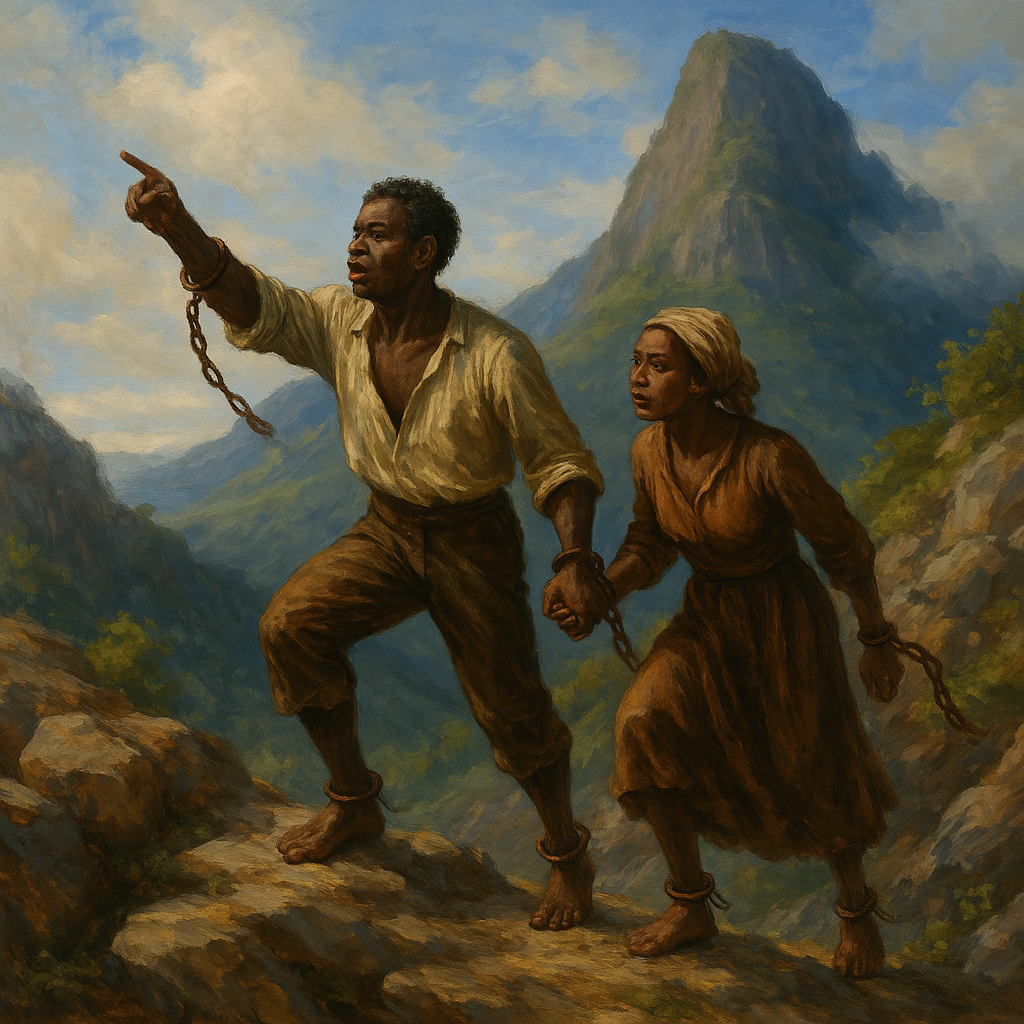
Anchaing, a slave of Malagasy origin, worked on the sugar plantations that covered Réunion in the 18th century. Like so many others, he endured the violence and subjugation imposed by the colonists. Héva, a young woman also under the yoke of slavery, shared his fate. United by destiny and a shared yearning for freedom, they decided to break their chains and flee into the unknown.
Their journey led them to the Salazie Cirque, a rugged and difficult-to-access region. In this lush maze, they found refuge atop a mountain whose steep slopes provided natural protection from the slave hunters. There, nestled among the clouds, they built a life—cultivating the land and raising a family far from the oppressive gaze of the colonists.
The Shadow of the Slave Hunters
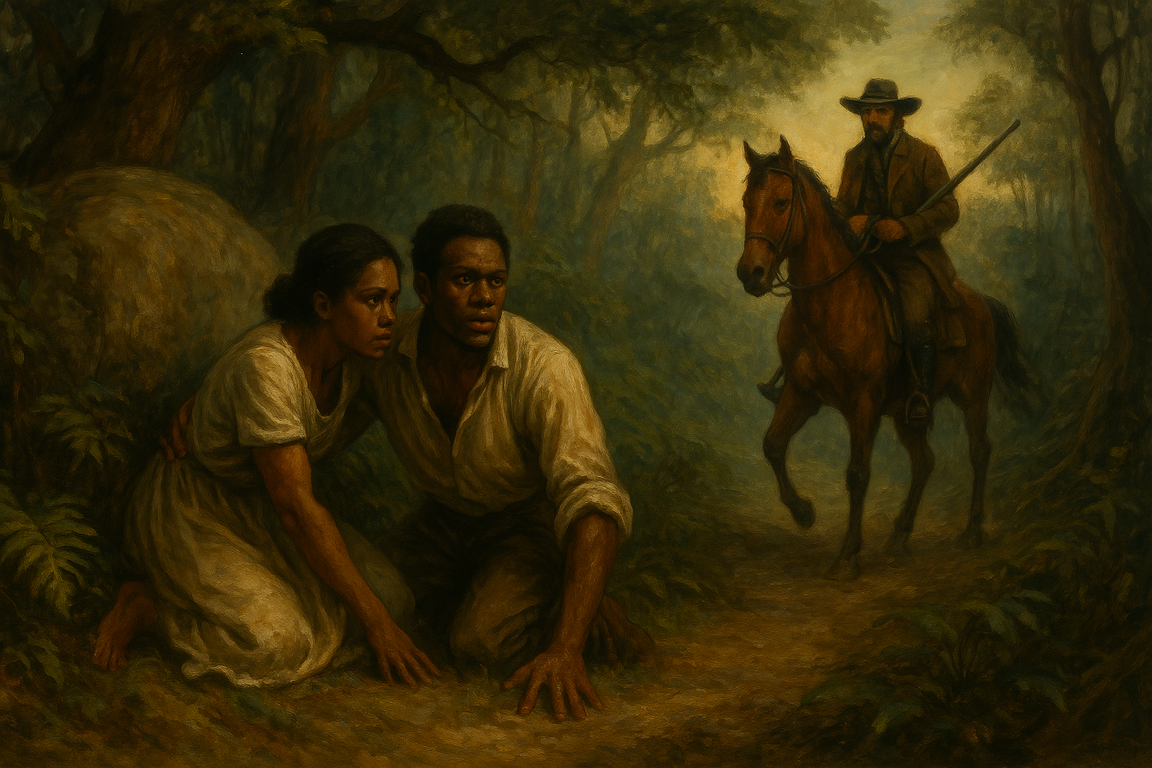
The freedom seized by Anchaing and Héva was only a fragile victory. The colonists, intent on preserving their economic and social order, employed slave hunters to track down escaped enslaved people. These men, armed and experienced, knew every corner of the island.
One of them, a man named Bronchard, took up their trail. The outcome of this pursuit is now shrouded in mystery, with each version of the tale offering a different conclusion. Some say Anchaing and Héva were captured and returned to slavery, extinguishing their dream of freedom. Others claim that Anchaing, rather than surrender, threw himself from the top of his mountain and transformed into a papangue—a bird of prey symbolic of Réunion.
Héva, matriarchal figure of réunion
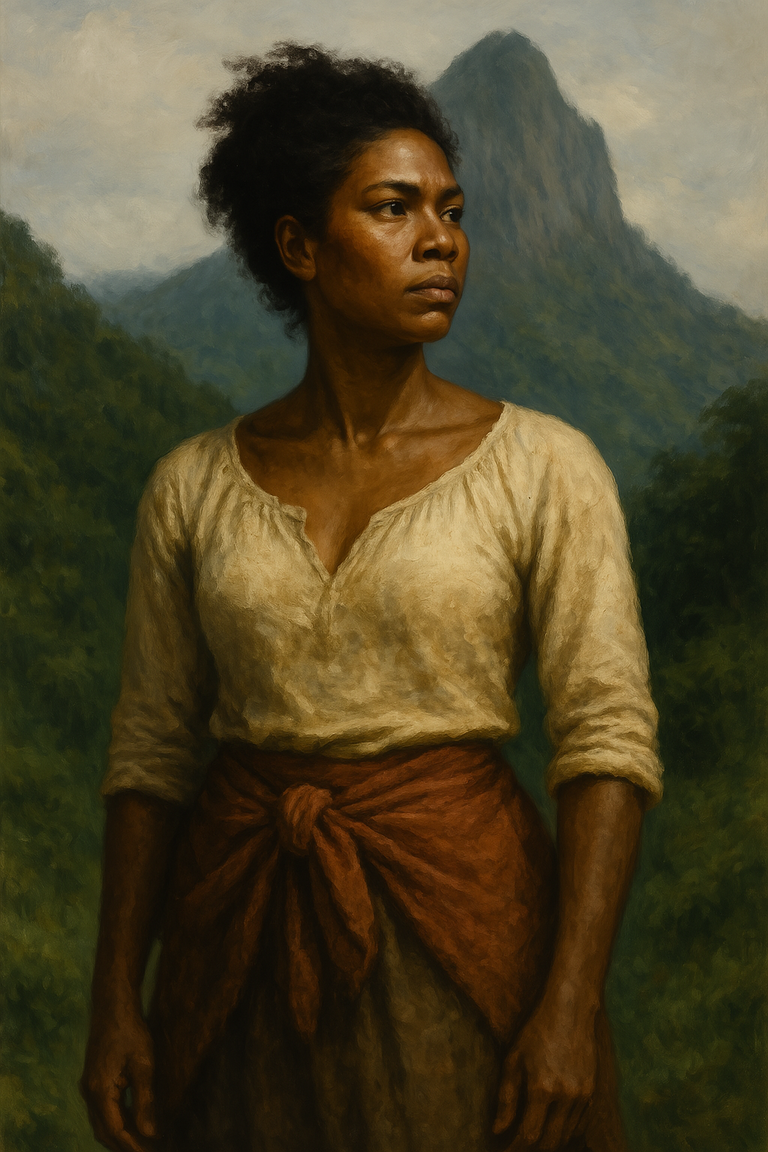
While Anchaing has become the emblem of marron resistance, Héva represents the strength and resilience of the island’s women. In some versions of the tale, she survived, continuing her life as a free woman and passing on her courage to her children. She embodies the archetype of the Réunionese woman: a fighter, a mother, and an independent spirit, carrying the legacy of a people forged through adversity.
A memory engraved in landscape and culture
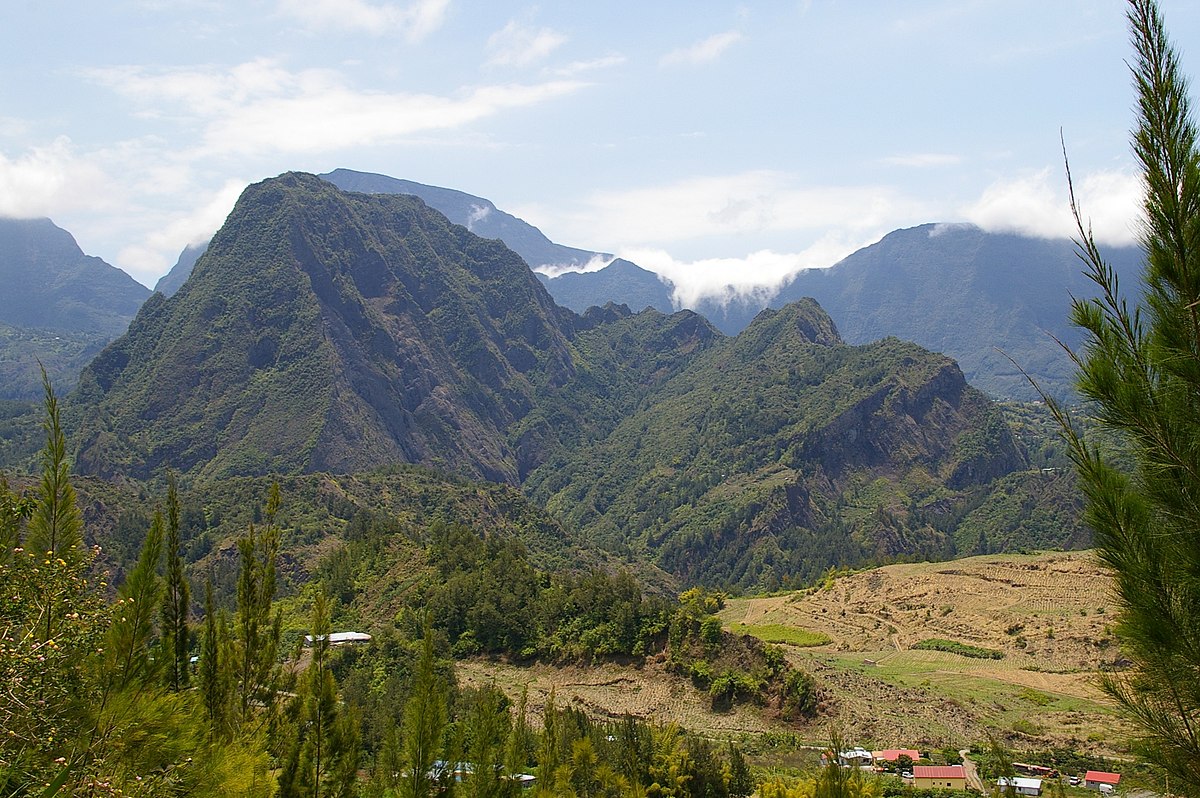
The Piton d’Anchaing seen from a viewpoint overlooking the Mare à Poule d’eau.
The Piton d’Anchaing seen from a viewpoint overlooking Mare à Poule d’eau.
Standing at 1,356 meters above sea level, the Piton d’Anchaing is today a landmark of Réunion. It is no longer merely a mountain peak, but a place of memory, where whispers of the past echo. This landscape, once a sanctuary for escaped slaves, has become a powerful symbol of resilience and resistance against oppression.
Beyond geography, the legend of Anchaing and Héva continues to inspire Réunionese art and literature. Writers such as Auguste Vinson have chronicled their epic, while sculptors like Gilbert Clain have immortalized their figures in bronze—leaving visible traces of their legacy across the Salazie Cirque.
A universal tale of quest and resistance
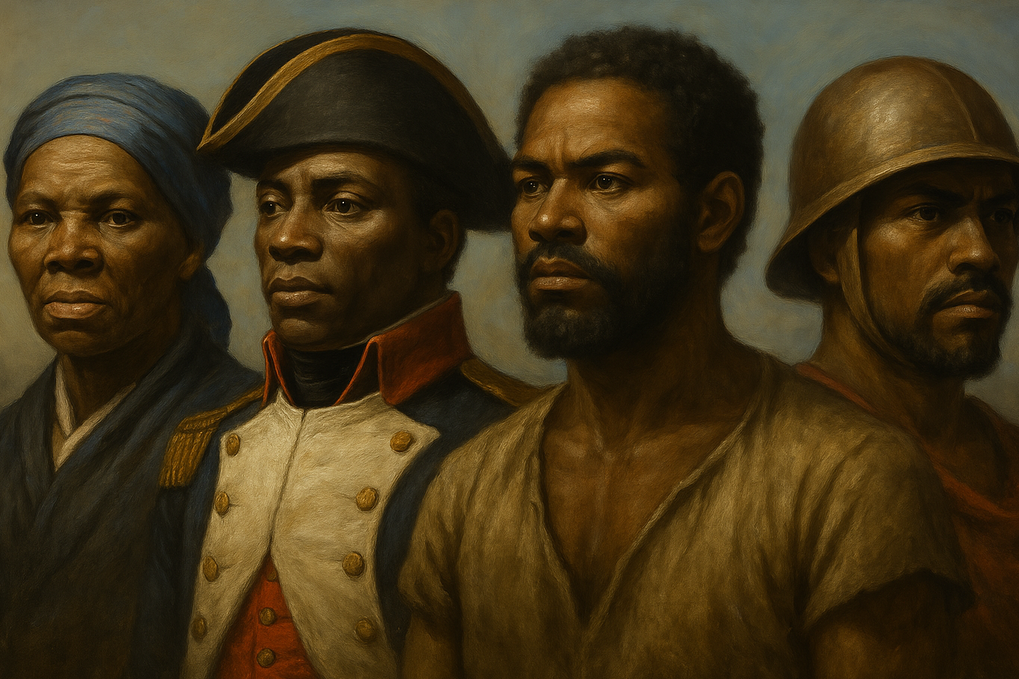
The story of Anchaing and Héva is not limited to Réunion. It resonates far beyond the Indian Ocean, joining the pantheon of great freedom fighters. Their tale recalls the journeys of other rebellious enslaved individuals, from Toussaint Louverture to Harriet Tubman, and Zumbi dos Palmares in Brazil.
Even today, their path inspires those who resist injustice and claim their dignity. Whether one believes or not in Anchaing’s metamorphosis into a papangue, one thing is certain: his spirit still soars over Réunion, reminding us that freedom—so dearly won—is an invaluable treasure to protect.
Summary
- The Call of Freedom
- The Shadow of the Slave Hunters
- Héva, Matriarchal Figure of Réunion
- A Memory Engraved in Landscape and Culture
- A Universal Tale of Quest and Resistance
Notes and References
- Origin and significance of Piton d’Anchaing: The Piton d’Anchaing, rising to 1,351 meters, is a symbolic peak of Réunion. It owes its name to the legendary marron slave Anchaing, who is said to have taken refuge there with his companion Héva to escape slavery.
- The legend of Anchaing and Héva: According to oral tradition, Anchaing and Héva, both of Malagasy origin, fled their master’s cruelty and found refuge in the Salazie Cirque, atop the Piton d’Anchaing. There, they are said to have lived in harmony, founding a family and farming the land to survive.
- Tragic fate: Their peaceful life was threatened by slave hunters, notably one named Bronchard, hired to capture runaways. Accounts of their fate differ: some suggest they were captured and returned to bondage, while others tell of Anchaing leaping from the cliff rather than surrendering, transforming into a papangue, a bird endemic to the island.
- Héva, symbol of Réunionese womanhood: Héva is often seen as Réunion’s first heroine, embodying the strength and resilience of the island’s women. Her story, though legendary, has become an allegory of the original Réunionese woman, symbolizing the quest for freedom and the struggle against oppression.
- Cultural legacy and collective memory: The story of Anchaing and Héva has deeply influenced Réunionese culture. The Piton d’Anchaing remains a powerful symbol of their quest for freedom. Works of art—such as statues by Gilbert Clain—pay homage to their memory. These sculptures, scattered across the Salazie Cirque, illustrate their lasting importance in the island’s collective imagination.
- Literary inspiration: Their story has also inspired Réunionese literature. Authors such as Auguste Lacaussade have recounted their legend, helping to perpetuate their memory and reinforce their status as symbols of resistance.
- International recognition: The Piton d’Anchaing is part of the “pitons, cirques and remparts of Réunion Island,” a natural site listed as a UNESCO World Heritage site since 2010, thus recognizing the exceptional value of its landscapes and the history they embody.
